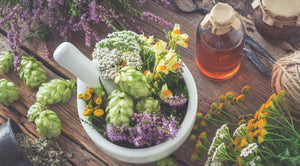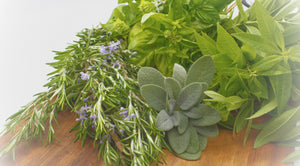The leaf stalks on this herb plant are best cut in mid-spring to early summer, as they will get fibrous as it gets more mature. It prefers semi-shade and needs a lot of water and rich, moist soil. Plant at least 4' apart as these plants grow quite large. The leaves are large-lobed and has thick hollow stems. The leaves and stalks are sweet, a special flavor rather like vanilla-scented celery and the best known way to use angelica is to crystallize the leaf stalk, preserving it for use in cakes, baked desserts and sweet meats. This culinary herb can also be used as a fresh herb; the stalk can be grated an added to a salad as can the leaves. Or add a wonderful flavor to seafood. An addition to sauces, after boiling and pureed. And, braised angelica is a wonderful addition to game. It is said that an infusion of angelica tea is good for the digestion, and will stimulate a poor appetite, improve energy as well as fight infection.
Angelica in the garden creates a striking feature - tall and elegant with flower-bearing stems that grow from the base of the plant. This highly aromatic plant grows up tall to 96" and has creamy white flowers massed into one almost round umbel. Its many leaflets are arranged in groups of three and its stems are hollow. A wonderful aromatic herb addition to fresh and dried bouquets.
A bit of interesting lore: According to one legend, Angelica was revealed in a dream by an angel to cure the plague (hence the name Angelica or Archangel). All parts of the plant were believed effective against evil spirits and witchcraft. It was held in such esteem that it was called 'The Root of the Holy Ghost.' In America it was used by the Iroquois and other tribes as Witchcraft Medicine, an infusion of smashed roots was used as wash to remove ghosts from the house! Angelica is an interesting herb with culinary, medicinal and gardening uses. It also has an interesting story that goes back far into history .. read more on Angelica!





